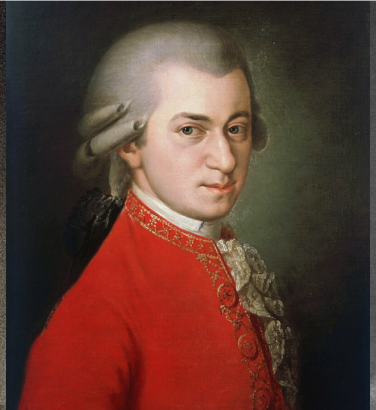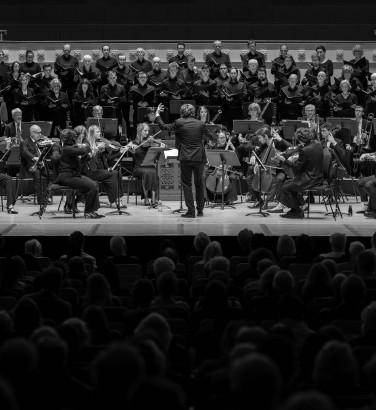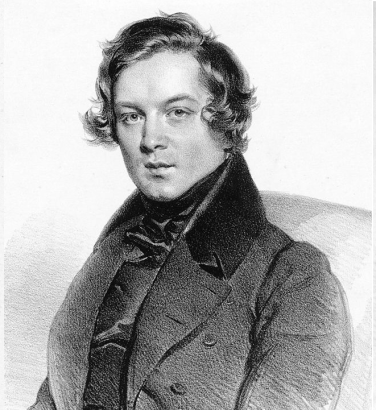
The bassoon concerto
3 Mar 2025
News Story
SCO Principal Bassoon Cerys Ambrose-Evans (photo credit: Christopher Bowen)
This article is part of an ongoing series this Season focusing on the concerto as written for specific instruments in the orchestra. With contributions from SCO players, we hope these give you some new insight into works you know and an idea of others they would recommend seeking out.
If you have listened to the Spotify playlists which have accompanied this series on the concerto, you many have noticed that they invariably start with something deliberately left-field: rather than going for a well-established classic, we have generally opted for a lesser-known work (often dating from the last century or so) which at least one of our players has been keen to highlight.
While Magic Moments is hardly obscure repertoire, Perry Como’s 1957 recording of this classic Burt Bacharach song is a hit (“it doesn’t get better than that!”) with our Principal Bassoon Cerys Ambrose-Evans, and with good reason. The bassoon part encapsulates a good deal of what makes the instrument so special, keeping sentimentality at bay with a wry, humorous commentary.
As such, the bassoon is often cast as the joker in the orchestral pack of cards: it’s hard to imagine the main theme of Dukas’ The Sorceror’s Apprentice, for instance, working as well on any other instrument. There is, however, a good deal more to the bassoon, as Cerys and our Second Bassoon Alison Green are quick to point out.
Its poise and nobility, in truth, are often tempered by an underlying hint of pomposity that makes it an ideal counterpart to any number of comic buffoons on the operatic stage. (This has a modern counterpart, of a sort, in Michael Daugherty’s Dead Elvis, in which the solo bassoonist is encouraged to dress as – you guessed it – Elvis Presley.) Take it into its lowest register, however, and Cerys enjoys “the most satisfying growl” that comes out, devastating in the introduction to Tchaikovsky’s Symphony No 6, Pathétique, or enriching the harmonic language of Sibelius.
All this to say that the bassoon is truly a multi-facetted instrument, though it would take composers some decades to appreciate the full breadth of its capabilities. It all started in Italy, where Vivaldi wrote – in Cerys’ estimation – “about 10 million bassoon concertos” (Alison opts for a more conservative 40), proof that “he really knew how to write impressive lines for the bassoon at a time when it was often considered a more humble instrument.” When it comes to orchestral music of the period, Alison is fascinated by how Rameau writes for bassoons: his parts are “often quite high and in unison”. (Like Vivaldi and his concertos, there’s no end of repertoire to choose from here: our Second Bassoon particularly recommends “the sublime 'Entrée de Polymnie' in Les Boréades” which, despite being little more than “a falling scale”, “always gives [her] the shivers.”

SCO Second Bassoon Alison Green
Credit: Christopher BowenOver in Germany, in the meantime, Graupner wrote four bassoon concertos, but in terms of familiarity, there’s little to beat the bassoon duet in the bass aria ‘Quoniam tu solus sanctus’ from Bach’s Mass in B Minor, a high point of the Baroque era for any lover of the instrument. Bassoon duets remain a comparative rarity, though Alison recalls playing Vanhal’s Concerto for Two Bassoons on an SCO Summer Tour, some years ago – and if that doesn’t sound like enough, seek out Corrette’s concerto Le Phénix in its version for four bassoons.
If there was little chance of Vivaldi’s prolific output of solo concertos being maintained – like so many other wind instruments before it, the bassoon would find its natural home within the body of the orchestra – the quality of the few bassoon concertos written over the next half-century or so would make up for this lack of quantity. First and foremost, we have Mozart’s, so “bubbly, witty [and] joyful” (in Cerys’ words) that it can be hard to believe this was his first concerto for a wind instrument, written when he was only 18. Cerys is particularly looking forward to performing with her SCO colleagues in our Mozart & Strauss concerts after years of playing it in auditions, “in rooms full of frowning faces”!
Such is Mozart’s fame that even a work he composed as a teenager now overshadows others of the same period, including concertos by CPE and JC Bach, Carl Stamitz and Pleyel (later to find fame as a piano manufacturer in Paris). That said, there wouldn’t be very long to wait before another beloved bassoon concerto saw the light of day: Weber’s in fact vies with Mozart’s for ubiquity as an audition piece. Both our players are very taken with the “operatic” flair required from the soloist, who has to convey moods “from yearning to pompous [and] back to lovestruck”. Cerys is also very fond of the concerto attributed to Rossini, which is enormous fun regardless who wrote it.
Some people crave baseball – I find this unfathomable but I can easily understand why a person could get excited about playing a bassoon.
By the later Romantic period, Alison points to Brahms and Richard Strauss as sources of fine orchestral bassoon parts – the latter’s being so fine (including in his wind serenades) that she wonders if he should have written a concerto. She and Cerys, however, are unanimous in naming Stravinsky as one of the composers for bassoon, and not just in The Rite of Spring: Cerys recommends the “extraordinary” writing for two bassoons in his Octet, while Alison sticks with his ballet scores, specifically Pulcinella and Petrushka. With such “amazing” bassoon parts to choose from, is it any wonder she also wishes Stravinsky had written a concerto?
Slightly later, we also find especially fine bassoon parts in music by Prokofiev and Bartók. In the latter's Concerto for Orchestra, for instance, a pair of them lead the way in the second movement Giuoco delle coppie (Game of the Couples), in decidedly perky manner - an effect heightened by the addition of a chattering third bassoon when this theme returns.
In terms of concerto repertoire, the later 20th century would see an enormous expansion of those written for bassoon. Very few of their composers are, in truth, anywhere near being household names, though it’s worth mentioning the concertos by the late Sofia Gubaidulina, the film composer Nino Rota and John Williams, Jean Françaix (something of a fixture in these articles) and Judith Bingham. There is also a true standout in Victor Bruns, a bassoonist himself, whose concertos span the best part of six decades: four for the bassoon proper (between 1933 and 1986), with one for contrabassoon following 1992.
As such, there aren’t many gaps in the bassoonist’s concerto repertoire, but it’s another matter when it comes to a solo sonata: the lack of one by Poulenc is cited all but unanimously. In fairness, it’s thought he may have written one (which he subsequently destroyed), but given that every Poulenc bassoon part Cerys plays or listens to “just fills my heart”, it is a significant loss. Perhaps this is because Poulenc, in his character and his music, is to all intents and purposes an embodiment of the instrument: by nature a cheeky wee scamp, but one who can catch the listener off-guard with a show of sincerity that unfailingly pulls on the heartstrings.
This wraps up our Season-long examination of the concerto for the various instruments that make up the Scottish Chamber Orchestra. There are two we haven’t covered so far, so keep a look out for future articles on those for horn and percussion.
Related Stories
![Three men, the first two in 18th century formal dress (one in black and white, one in a red coat), the last in an old photo, smoking]()
What is a sinfonia concertante?
17 March 2025
We delve into the history of a hybrid genre ...![]()
The SCO Chorus on music for Lent
10 March 2025
With Easter just around the corner, we delve into perhaps the richest (and often darkest) choral repertoire of all ...![]()
The tortured tale of Schumann's Violin Concerto
24 February 2025
Or, how suppressing a work for 80 years can affect its long-term fortunes.


